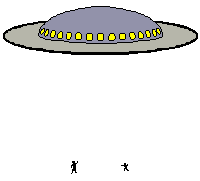
Sumerian texts and the ancient Ubaid culture hints at an alternative reality of human history that consists of bizarre reptilian-like humanoids.

For a very long time, the true origin of humanity has been speculated. The question is are humans the results of the natural laws of evolution? Could it be possible that a certain set of particles assembled and the humans originated from it? Or humans are molded by a greater, divine power called God or some other advanced beings? Unfortunately, there is also the holographic universe idea, which we can only attribute to another powerful force that is unknown to us at the moment.
Such ideas and hypotheses continue to baffle humans even today, however certain scenarios have led us to progress. By pointing a finger at our origin, the scope of technology has been expanded, which compels us to look at reality in a different manner.
The reality is too complex to be found and to venture near the true origin of humans, it is essential to seek truth from all possible aspects available at our disposal. One such hypothesis has been formed after carefully analyzing Sumerian history and the Ubaid culture.
Sumer is commonly referred to as civilization’s cradle. Archaeologists discovered extensive traces of this ancient society, which dates back more than 7,000 years to the Sumerians’ establishment in Mesopotamia – “the country between rivers.” They developed a sophisticated civilization, complete with a sophisticated writing system, gorgeous arts, architecture, astronomy, and mathematics.

Sumer was made of numerous city-states that withstood the test of time for approximately 3,000 years, an incredible feat in light of the fast evolution of human cultures nowadays. These towns were also considered autonomous nations, with public buildings, an advanced water system, markets, and workshops, surrounded by agricultural land and other communities.
Until human aversion became apparent, political authority in their civilization was held by citizens, but due to climate change and human nature, they quickly shifted to the concept of royalty. Nonetheless, the Sumerians left an incredible legacy.
Ancient Sumerian Legacy
One of the oldest known writing systems, as indicated by cuneiform inscriptions, in which authors created symbols with a pointed device called a stylus and pushed them into wet clay tablets that were then dried in the sun to preserve the text. Thousands of these inscriptions have survived, revealing a wealth of information about their civilization.
The Sumerians are recognized for the invention of the first legal documents, the lunar calendar, the sailboat, and the plow. Another accomplishment is the development of a numerical system based on the number 60, a rule that still holds true when seconds and minutes are measured.
The Sumerian King List is a Sumerian-language artifact that lists all the kings of Summer (ancient southern Iraq), along with their supposed reign lengths and royal places.
What makes this ancient text so interesting is that it covers a lengthy dynasty of kings dating from soon after The Great Deluge (about 10,000–12,000 B.C. ), but also prior to this great mythological event.
The list is comparable to Egyptian inscriptions, which depict a dynasty of pharaohs up to the time when the Gods descended from the skies to the Earth. Conventional science, on the other hand, does not credit these magical overlords because no archaeological evidence has been discovered thus far.

The Epic of Gilgamesh- A cuneiform-scripted epic poem dating from the early third millennium BC. The mythological hero-king Gilgamesh and his half-wild companion Enkidu embark on a quest to discover the secret of immortality. As the epic describes, the two encounter a tremendous flood that has a striking resemblance to the Biblical account of Noah and the Ark, which is also told in a variety of different civilizations.
Ancient Sumerian inscriptions depicting the human creation account were discovered engraved on a tablet in Nippur, an ancient Mesopotamian city founded around 7,000 years ago. The story takes place before the great deluge when humanoid gods landed on Earth in search of riches to alleviate their difficulties. They sought to make the land hospitable while also mining for the valuable mineral upon their arrival. We know those Gods as Anunnaki.
It is believed that these superior beings decided to create humans and made them slaves. Anu, the God of the Gods, relied on his son, Enki, and his half-sister Ninki, to create the race of slaves using the body of a God mixed with clay.
Due to this achievement, Enki and Ninki assumed the position of parents and in light of the difficult conditions their creation had to suffer, the two determined to create a better version of man. Thus was created Adapa, a fully functional human being capable of reproducing and challenging authority.
Since this deed was conducted without the permission of neither Enki’s brother, Enlil nor Anu, a conflict arose and escalated between the Gods. Enki and Ninki were exiled by their own kind, and humanity came perilously close to extinction in a great flood. However, with the assistance of their makers, the freshly formed species were able to depart the earth and procreate.
To fully comprehend who these Godlike entities were and how they resembled human beings, we must go even further back in antiquity, as far as archaeology allows. In this vein, let us consider one of the pre-Sumerian cultures.
Ubaid Culture and the Reptilian Mystery
Archaeologists discovered a slew of pre-Sumerian relics portraying a humanoid manifestation of reptilian humanoids in 1919. The figures possessed elongated heads, almond-shaped eyes, long tapered faces, and a lizard-like nose.
Among the more perplexing statuettes is one depicting a female reptile nursing her suckling. This, researchers believe, indicates that these were not ritualistic objects, and their purpose remains a mystery even now.
Al Ubaid is a modest half-kilometer-diameter mound found near the Persian Gulf. Numerous male and female figurines have been discovered here, as well as at the Ur and Eridu sites. Some of these relics wear strange helmets and feature shoulder padding. Others wield scepters, most likely as a sign of wisdom, power, or authority.

Around 6,200 B.C., the Ubaid culture appears to have begun on the flat alluvial plains of southern Mesopotamia (ancient Iraq), expanded north, and gradually displaced the Halaf culture. The legacy left behind by these ancient peoples (Ubaid and Halaf) stretches as far back in antiquity as archaeology can go from a tangible point of view.
Besides the numerous dried clay figurines with ornaments and reptilians figurines discovered in Ubaid sites, additional items such as intricately designed ceramics, clay tokens, pendants, and stamp seals depicting diverse animals were also discovered.


The earliest recognized settlements date from this time period and location, and these locations grew into towns and monumental structures, such as the Sumerian cities of Eridu and Uruk.
The question is who were these people and for what purpose did they integrate reptilian humanoid figurines in their religion. Fragment by fragment, the origin of humans are coming together, however knowing the truth about our ancestors would provide peace to the majority of us who wish to comprehend humanity’s origins.
Please remember we all have different opinions, Think Before You Speak or Write Something that is cruel to Others. After all, We are only Humans. Wishing you clear skies and wide eyes. To share your experiences or just leave a comment there is a area below. Read or listen.
We are the change the world has been waiting for!
Have you witnessed an unidentified flying object?
You are not alone. Whether you think UFOs are black projects, extraterrestrial craft, something else altogether, or just don’t know, again, you are not alone!
Unconditional love. The road we all get to walk. Unconditional love is like the sun.
WE ARE THE DISCLOSURE !~ WE HAVE NEVER BEEN ALONE
Love and Regards,
Thank You,
Nancy Thames
Source:




Hello! My held belief’s have not changed as far as Reptilan humanoids goes.I discount the premise that they had a hand in human creation.The Elohim creation story is far more rational and logical than humans being made with clay or alien DNA and clearly the DNA is from the Elohim not any other ET race.Why should I accept the creation myth or claim from any other race.